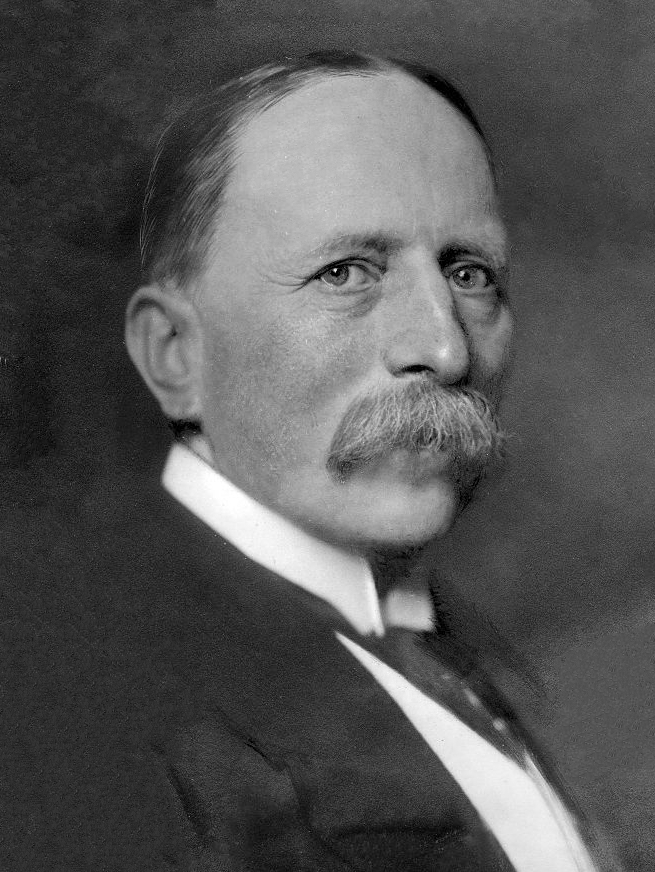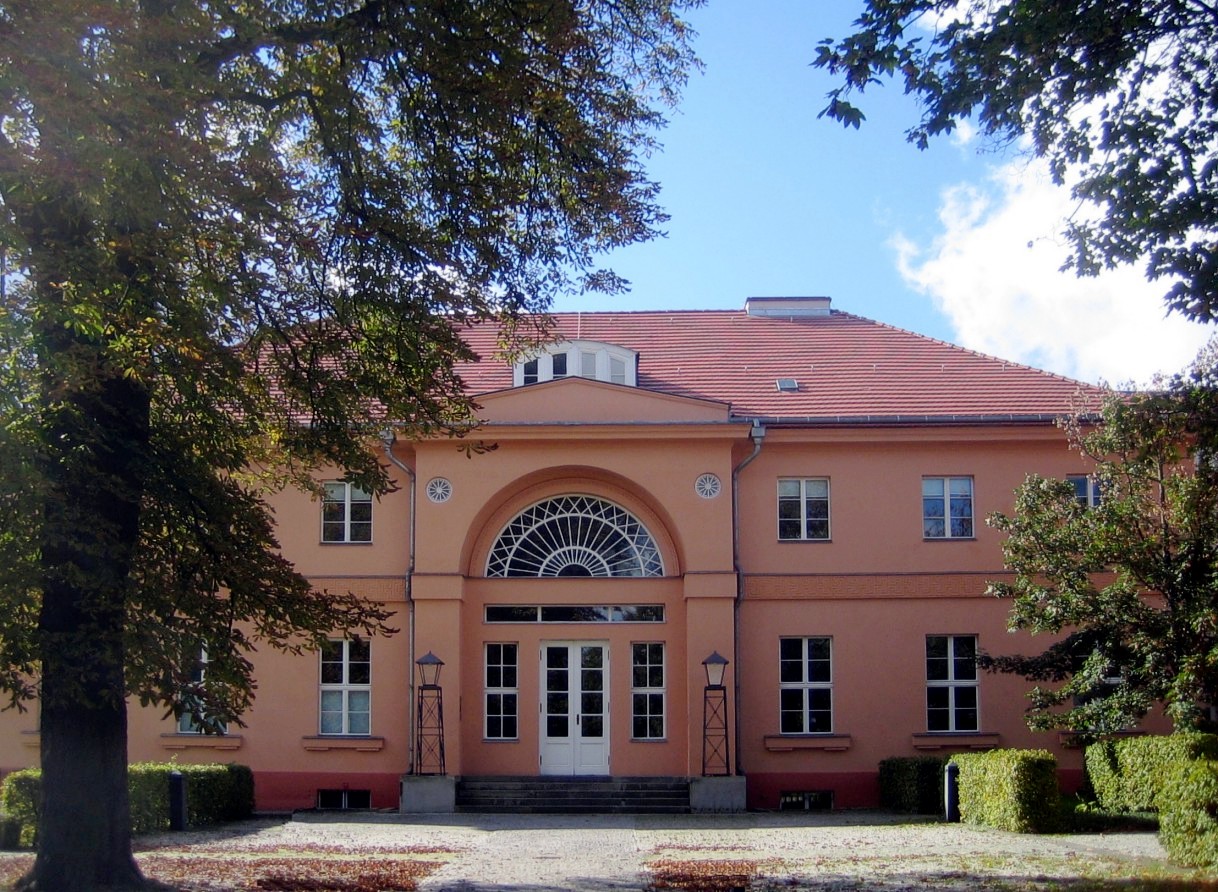|
Friedrich Schmidt-Ott
Friedrich Gustav Adolf Eduard Ludwig Schmidt-Ott (until 1920 his surname was Schmidt) (4 June 1860, in Potsdam – 28 April 1956, in Berlin) was a German lawyer, scientific organizer, and science policymaker. He was the Prussian Minister of Culture, president of the Emergency Association of German Science, on the advisory boards of the Kaiser Wilhelm Society and its institutes, and chairman of the Donor Federation of the Emergency Association of German Science. Education Schmidt-Ott had a degree in law. Career From 1888, Schmidt-Ott was at the ''Preußisches Kultusministerium'' (PrKM, Prussian Culture Ministry), officially the ''Preußisches Ministerium für Wissenschaft, Kunst und Volksbildung'' Prussian Ministry of Science, Arts, and Culture. For many years, he was assistant to Friedrich Althoff. From 1903, Schmidt-Ott was head of the arts division, and from 1917, he was the ''Preußischen Kultusminister'' (Prussian Minister of Culture), which included responsibility for educa ... [...More Info...] [...Related Items...] OR: [Wikipedia] [Google] [Baidu] |
Friedrich Schmidt-Ott C1917
Friedrich may refer to: Names *Friedrich (surname), people with the surname ''Friedrich'' *Friedrich (given name), people with the given name ''Friedrich'' Other *Friedrich (board game), a board game about Frederick the Great and the Seven Years' War * ''Friedrich'' (novel), a novel about anti-semitism written by Hans Peter Richter *Friedrich Air Conditioning, a company manufacturing air conditioning and purifying products *, a German cargo ship in service 1941-45 See also *Friedrichs (other) *Frederick (other) *Nikolaus Friedreich Nikolaus Friedreich (1 July 1825 in Würzburg – 6 July 1882 in Heidelberg) was a German pathologist and neurologist, and a third generation physician in the Friedreich family. His father was psychiatrist Johann Baptist Friedreich (1796–1862) ... {{disambig ja:フリードリヒ ... [...More Info...] [...Related Items...] OR: [Wikipedia] [Google] [Baidu] |
Reichserziehungsministerium
The Reich Ministry of Science, Education and Culture (german: , also unofficially known as the "Reich Education Ministry" (german: ), or "REM") existed from 1934 until 1945 under the leadership of Bernhard Rust and was responsible for unifying the education system of Nazi Germany and aligning it with the goals of Nazi leadership. Background The REM was the successor to the former ''Preußisches Ministerium für Wissenschaft, Kunst und Volksbildung'' (Prussian Ministry of Science, Art and Culture), creating for the first time in Germany a centralized and hierarchical institution in control of the Reich's education sector. In 1934, the REM took over from the ''Reichsinnenministerium'' (Reich Interior Ministry) the supervision of colleges and universities in Germany, as well as research institutions such as the ''Physikalisch-Technische Reichsanstalt'' (abbreviated PTR; translation: Reich Physical and Technical Institute.); today, the PTR is known as the ''Physikalisch-Technische ... [...More Info...] [...Related Items...] OR: [Wikipedia] [Google] [Baidu] |
1860 Births
Year 186 ( CLXXXVI) was a common year starting on Saturday (link will display the full calendar) of the Julian calendar. At the time, it was known as the Year of the Consulship of Aurelius and Glabrio (or, less frequently, year 939 ''Ab urbe condita''). The denomination 186 for this year has been used since the early medieval period, when the Anno Domini calendar era became the prevalent method in Europe for naming years. Events By place Roman Empire * Peasants in Gaul stage an anti-tax uprising under Maternus. * Roman governor Pertinax escapes an assassination attempt, by British usurpers. New Zealand * The Hatepe volcanic eruption extends Lake Taupō and makes skies red across the world. However, recent radiocarbon dating by R. Sparks has put the date at 233 AD ± 13 (95% confidence). Births * Ma Liang, Chinese official of the Shu Han state (d. 222) Deaths * April 21 – Apollonius the Apologist, Christian martyr * Bian Zhang, Chinese official and g ... [...More Info...] [...Related Items...] OR: [Wikipedia] [Google] [Baidu] |
Grand Crosses 1st Class Of The Order Of Merit Of The Federal Republic Of Germany
Grand may refer to: People with the name * Grand (surname) * Grand L. Bush (born 1955), American actor * Grand Mixer DXT, American turntablist * Grand Puba (born 1966), American rapper Places * Grand, Oklahoma * Grand, Vosges, village and commune in France with Gallo-Roman amphitheatre * Grand Concourse (other), several places * Grand County (other), several places * Grand Geyser, Upper Geyser Basin of Yellowstone * Grand Rounds National Scenic Byway, a parkway system in Minneapolis, Minnesota, United States * Le Grand, California, census-designated place * Grand Staircase, a place in the US. Arts, entertainment, and media * ''Grand'' (Erin McKeown album), 2003 * ''Grand'' (Matt and Kim album), 2009 * ''Grand'' (magazine), a lifestyle magazine related to related to grandparents * ''Grand'' (TV series), American sitcom, 1990 * Grand piano, musical instrument * Grand Production, Serbian record label company * The Grand Tour, a new British automobile show O ... [...More Info...] [...Related Items...] OR: [Wikipedia] [Google] [Baidu] |
Berlin-Steglitz
Steglitz () is a locality of the Steglitz-Zehlendorf borough in Southwestern Berlin, the capital of Germany. is a Slavic name for the European goldfinch, similar to the German . Steglitz was also a borough from 1920 to 2000. It contained the localities Steglitz, Südende, Lichterfelde and Lankwitz. In 1960, Südende became a neighborhood within Steglitz. History While one Knight Henricus of Steglitz was already mentioned in an 1197 deed, the village of Steglitz was first mentioned in the 1375 of Emperor Charles IV, at this time also ruler of the Electorate of Brandenburg. Steglitz witnessed the construction of the first paved Prussian country road, in 1792. The former village profited largely from its location on the Imperial Highway , today , which follows a trading route that dates back to the Middle Ages. The old stretched from the far west of Germany through Aachen and Cologne to Berlin, then continued on eastward to end some two hundred miles northeast of Königsber ... [...More Info...] [...Related Items...] OR: [Wikipedia] [Google] [Baidu] |
Order Of Merit Of The Federal Republic Of Germany
The Order of Merit of the Federal Republic of Germany (german: Verdienstorden der Bundesrepublik Deutschland, or , BVO) is the only federal decoration of Germany. It is awarded for special achievements in political, economic, cultural, intellectual or honorary fields. It was created by the first President of the Federal Republic of Germany, Theodor Heuss, on 7 September 1951. Colloquially, the decorations of the different classes of the Order are also known as the Federal Cross of Merit (). It has been awarded to over 200,000 individuals in total, both Germans and foreigners. Since the 1990s, the number of annual awards has declined from over 4,000, first to around 2,300–2,500 per year, and now under 2,000, with a low of 1752 in 2011. Since 2013, women have made up a steady 30–35% of recipients. Most of the German federal states (''Länder'') have each their own order of merit as well, with the exception of the Free and Hanseatic Cities of Bremen and Hamburg, which rejec ... [...More Info...] [...Related Items...] OR: [Wikipedia] [Google] [Baidu] |
Deutsche Akademie Der Naturforscher Leopoldina
The German National Academy of Sciences Leopoldina (german: link=no, Deutsche Akademie der Naturforscher Leopoldina – Nationale Akademie der Wissenschaften), short Leopoldina, is the national academy of Germany, and is located in Halle (Saale). Founded on 1 January 1652, based on academic models in Italy, it was originally named the ''Academia Naturae Curiosorum'' until 1687 when Emperor Leopold I raised it to an academy and named it after himself. It was since known under the German name ''Deutsche Akademie der Naturforscher Leopoldina'' until 2007, when it was declared to be Germany's National Academy of Sciences. History ' The Leopoldina was founded in the imperial city of Schweinfurt on 1 January 1652 under the Latin name sometimes translated into English as "Academy of the Curious as to Nature." It was founded by four local physicians- Johann Laurentius Bausch, the first president of the society, Johann Michael Fehr, Georg Balthasar Metzger, and Georg Balthasar Wohlfar ... [...More Info...] [...Related Items...] OR: [Wikipedia] [Google] [Baidu] |
Universität Wien
The University of Vienna (german: Universität Wien) is a public research university located in Vienna, Austria. It was founded by Duke Rudolph IV in 1365 and is the oldest university in the German-speaking world. With its long and rich history, the university has developed into one of the largest universities in Europe, and also one of the most renowned, especially in the Humanities. It is associated with 21 Nobel prize winners and has been the academic home to many scholars of historical as well as of academic importance. History From the Middle Ages to the Enlightenment The university was founded on March 12, 1365, by Rudolf IV, Duke of Austria, hence the name "Alma Mater Rudolphina". After the Charles University in Prague and Jagiellonian University in Kraków, the University of Vienna is the third oldest university in Central Europe and the oldest university in the contemporary German-speaking world; it remains a question of definition as the Charles University ... [...More Info...] [...Related Items...] OR: [Wikipedia] [Google] [Baidu] |
Adlerschild Des Deutschen Reiches
The ''Adlerschild des Deutschen Reiches'' ( en, Eagle Shield of the German Reich) was an honorary award (german: Ehrengabe) granted by the German president for scholarly or artistic achievements. It was introduced during the Weimar Republic, under President Friedrich Ebert and continued under Nazi Germany. It was a metal disc with a German imperial eagle on a pedestal. It was a high and infrequently awarded honor, received by around 70 people in total. Recipients during the Weimar Republic Article 109, section 3 of the Weimar Constitution entitled "Orders and honours may not be given by the state" enacted a ban on honorific orders. Nevertheless, there was a desire for the state to be able to confer symbolic honours and the honorific award of the Adlerschild des Deutschen Reiches was created to meet this desire. It consisted of a 108 mm wide medal of cast bronze, mounted on a bronze pedestal and inscribed on the reverse with an individualised honorific inscription. The des ... [...More Info...] [...Related Items...] OR: [Wikipedia] [Google] [Baidu] |
Deutsche Forschungsgemeinschaft
The German Research Foundation (german: Deutsche Forschungsgemeinschaft ; DFG ) is a German research funding organization, which functions as a self-governing institution for the promotion of science and research in the Federal Republic of Germany. In 2019, the DFG had a funding budget of €3.3 billion. Function The DFG supports research in science, engineering, and the humanities through a variety of grant programmes, research prizes, and by funding infrastructure. The self-governed organization is based in Bonn and financed by the German states and the federal government of Germany. As of 2017, the organization consists of approximately 100 research universities and other research institutions. The DFG endows various research prizes, including the Leibniz Prize. The Polish-German science award Copernicus is offered jointly with the Foundation for Polish Science. According to a 2017 article in ''The Guardian'', the DFG has announced it will publish its research in onl ... [...More Info...] [...Related Items...] OR: [Wikipedia] [Google] [Baidu] |
Stifterverband Der Notgemeinschaft Der Deutschen Wissenschaft
The Stifterverband der Notgemeinschaft der Deutschen Wissenschaft (Donor Federation of the Emergency Association of German Science) was founded on 14 December 1920 to collect donations for the ''Notgemeinschaft der Deutschen Wissenschaft'' through its representatives in industry or through political influence. From 1920 to 1945, R. Fellinger of Siemens was the managing director. Contributions to the Federation were small compared to grants from the government, especially because of competing organizations, such as ''Helmholtz-Gesellschaft'' (today, the Helmholtz Association of German Research Centres), founded by Albert Vögler in 1920, and the ''Fördergesellschaft der Deutschen Industrie'' (Society for the Advancement of German Industry). Chairmen *1920 – 1934: Carl Friedrich von Siemens *1934 – 1935: Carl Duisberg *1935 – 1945: Friedrich Schmidt-Ott Friedrich Gustav Adolf Eduard Ludwig Schmidt-Ott (until 1920 his surname was Schmidt) (4 June 1860, in Potsdam ... [...More Info...] [...Related Items...] OR: [Wikipedia] [Google] [Baidu] |





